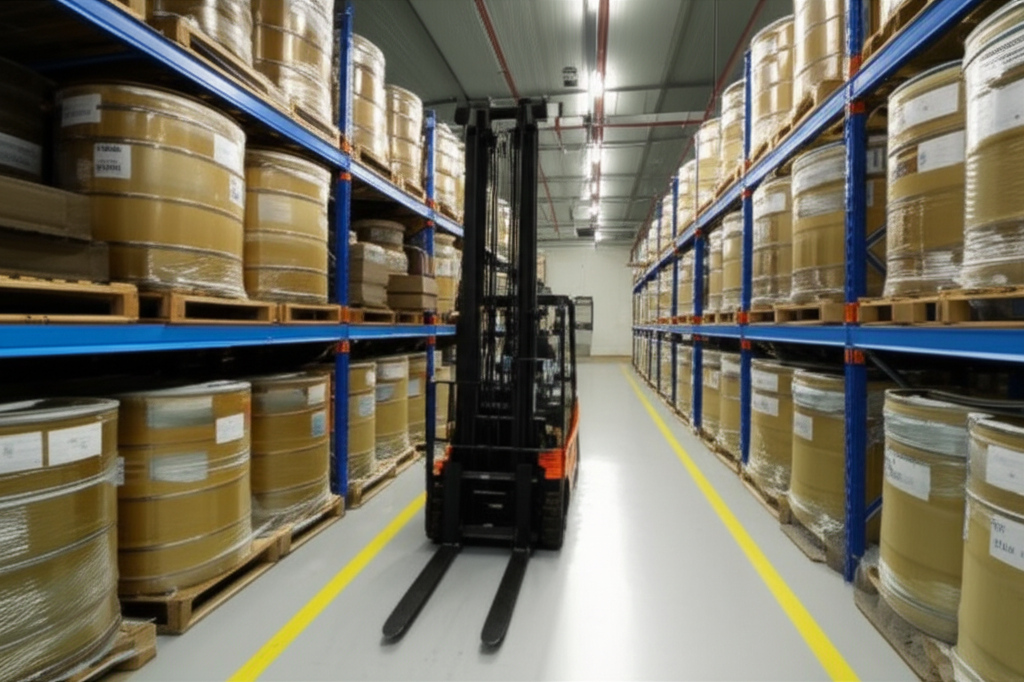A groundbreaking patent discloses a significantly enhanced method for synthesizing beta-carotene, a vital Vitamin A precursor and critical nutritional supplement. This novel approach addresses critical safety concerns and production inefficiencies inherent in traditional industrial methods, relying on an innovative oxidation strategy and optimized post-reaction handling.

Conventional beta-carotene synthesis via Wittig condensation of vitamin A-derived phosphonium salts often employs hydrogen peroxide (H₂O₂) as an oxidant. This presents substantial drawbacks, including high costs, elevated explosion risks due to H₂O₂ decomposition, and complex purification needs. Notably, existing processes removing solvents like methanol prior to oxidant addition caused co-precipitation of the problematic by-product triphenylphosphine oxide (TPPO) with the crude beta-carotene, necessitating extensive recrystallization and lowering final purity.
The patented breakthrough centers on replacing hazardous peroxy-based oxidants with readily available and inexpensive hypochlorite salts, specifically sodium hypochlorite (NaOCl) or calcium hypochlorite (Ca(OCl)₂). This pivotal shift drastically reduces manufacturing costs and, crucially, eliminates the explosion hazards associated with concentrated H₂O₂, markedly improving plant safety. The method involves reacting a vitamin A derivative (such as retinol, retinyl acetate, or economically advantageous crystallization mother liquors) with triphenylphosphine to form the organic phosphonium salt intermediary.
Secondly, the patent revolutionizes the post-reaction workup. Contrary to older methods, the reaction mixture containing water and a water-miscible organic solvent (preferred: methanol, ethanol, isopropanol; solvent:water ratios between 5:95 and 95:5, optimally 50:80 to 80:20) is not subjected to initial solvent stripping. Maintaining this solvent presence during the hypochlorite-initiated dimerization/coupling reaction (-20°C to 30°C, optimally 0-10°C for 0.5-20 hours) is critical.
Following the reaction, the workup diverges effectively into two streamlined paths:
1. Direct filtration of the resulting mixture yields a crude beta-carotene surprisingly free of TPPO contamination, as TPPO and inorganic salts remain dissolved in the filtrate.
2. Alternatively, extraction of the mixture using solvents like chloroform, dichloromethane, or ethyl acetate provides an extract that, upon concentration and removal of extraction solvent, likewise provides clean crude beta-carotene.
Both methods bypass the need for extensive TPPO removal washes prior to the final isomerization step.
The obtained crude beta-carotene then undergoes standard purification: recrystallization or, more crucially, heating in a suitable solvent (e.g., n-heptane) under an inert atmosphere (like nitrogen) to facilitate the thermal isomerization of various cis-isomer mixtures into the desired, biologically active all-trans beta-carotene form. The avoidance of TPPO co-precipitation significantly enhances the purity achievable in this final product. Utilizing vitamin A acetate or retinol crystallization mother liquors as starting materials, containing mixes of stereoisomers, proves economically beneficial ("valorizing waste") and can partially pre-simplify the isomerization requirements.
Experimental evidence solidly supports the invention's superiority. Utilizing Ca(OCl)₂ offered enhanced efficiency versus NaOCl. Crucially, reactions consistently achieved yields exceeding 30% of high-purity beta-carotene (>96% purity in optimized examples). Key findings included:
* Optimal Performance at Low Temperatures: Reactions conducted at 0-5°C (Example 2) yielded 50.2g crude (65% purity), providing 30g final product at 98.2% purity (38.1% yield). Performing the reaction at 20-25°C (Example 5) resulted in lower yield (34.2g crude, 75% purity; 25g final at 97.3% purity, 31.5% yield), while temperatures of 30-35°C (Example 6) saw a significant drop to 16.6% yield.
* Effective Use of Mother Liquor: Processing vitamin A acetate crystallization mother liquor at 0-5°C (Example 3), mimicking Example 2 conditions, yielded 28.9g at 96.7% purity (36.7% yield). Performing the same mother liquor reaction at -5°C to 0°C (Example 8) pushed yield to 36.1% (purity 89.5% before isomerization).
* Improved Extraction Protocol: Example 4, using Ca(OCl)₂ followed by methanol removal and chloroform extraction/TPPO dissolution in methanol, produced 35g final product at 98.5% purity (44.4% yield), demonstrating the effectiveness of the extraction workup path.
This patented synthesis represents a major advance in beta-carotene manufacturing technology. By substituting dangerous H₂O₂ with safe, cost-effective hypochlorite and ingeniously maintaining the organic solvent phase throughout the coupling and initial workup, the process delivers substantial benefits: Enhanced operational safety, significant reduction in production costs, simpler purification eliminating dedicated TPPO removal steps, and critically, an end product of superior purity. This innovation holds significant promise for scaling within the nutritional supplement, food coloring, and pharmaceutical industries.
Manufacturing Facilities






Professional Export Experience
to Global Customers

1. 20 years of R&D, manufacturing and sales experience, serving customers in 60 countries and regions around the world;
2. Own R&D laboratory, pilot platform and large-scale production workshop, which can meet the audit requirements of global customers;
3. We can satisfy customers' perfect transition from small scale lab requirements (gram level) to commercialization requirements (hundred tons level).
A: We don't have Minimum Order Quantity, exact quantity should be provided before quotation for us to calculate the exact cost.
A: We don't provide free samples due to lots of request and expensive international courier's cost, we can deduct the sample charge after commercial order placed.
A: Our payment terms: Small or sample order: T/T IN ADVANCE. Commercial order: First order should be by T/T IN ADVANCE or L/C at sight, and following orders T/T 30~90days is acceptable subject to approval of credit application.